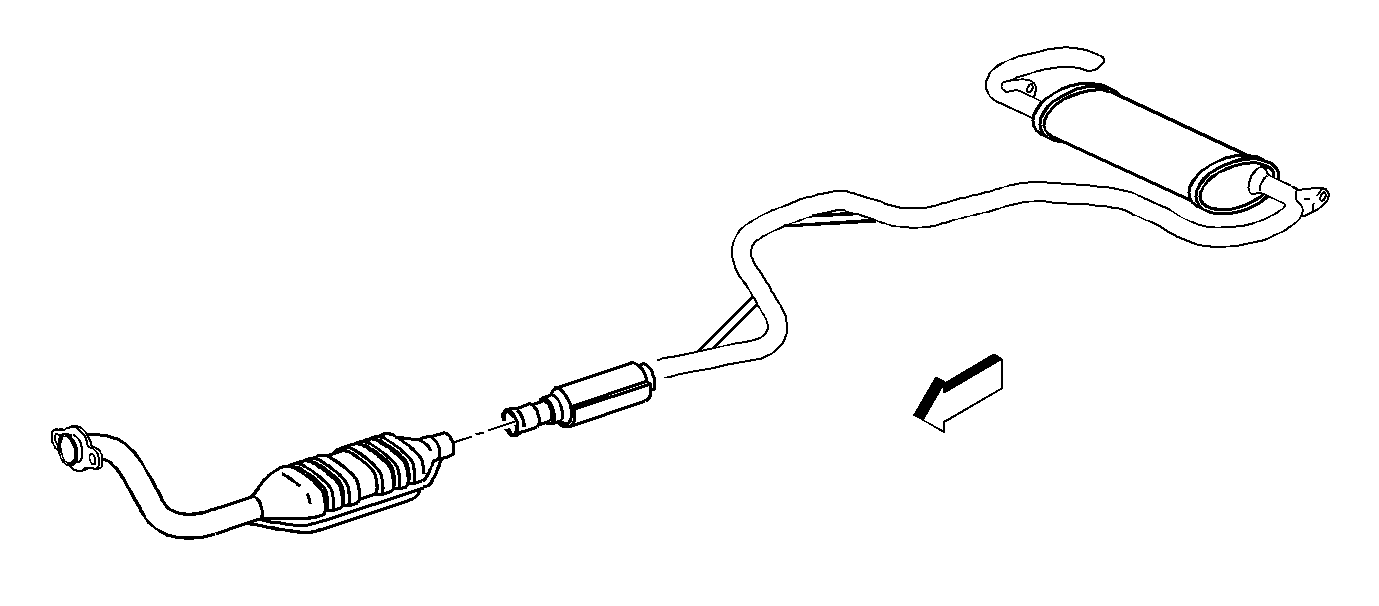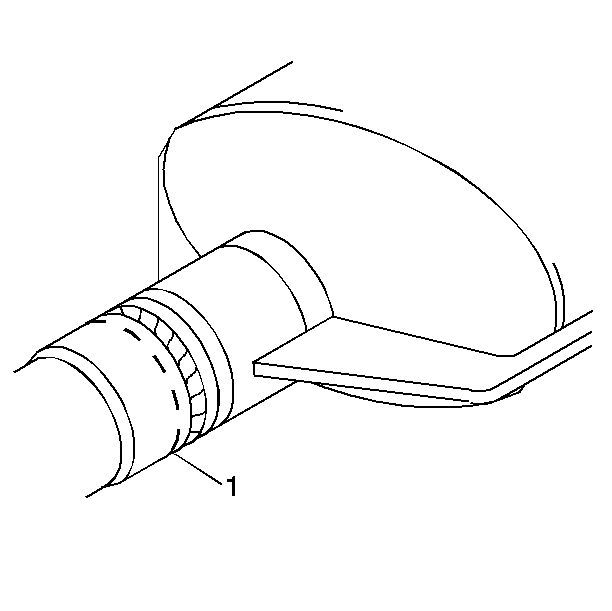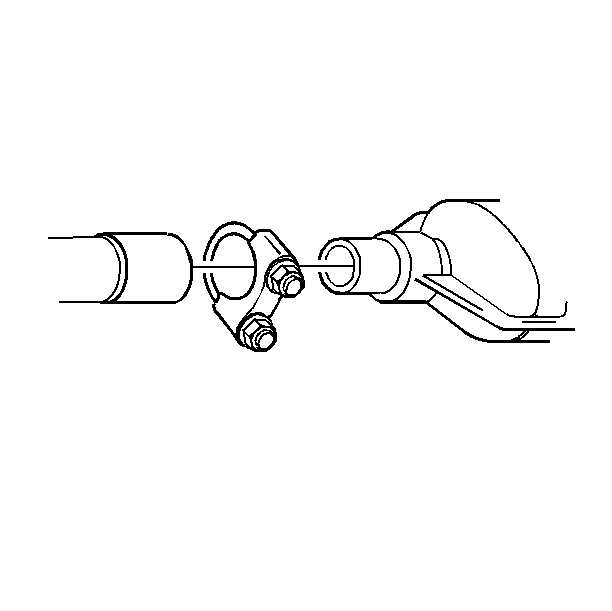The L36 and the L67 exhaust systems incorporate the following components from the front to the rear:
| • | An exhaust manifold front pipe |
| • | The catalytic converter |
| • | The resonator |
| • | The intermediate pipe |
| • | The muffler |
| • | The tail pipe |
The exhaust manifold front pipe is welded to the catalytic converter. Both components are serviced as one unit. The exhaust crossover pipe is attached to the following exhaust manifolds:
- The front manifold
- The rear manifold
The intermediate pipe is welded to the converter outlet.
All pipe to manifold connections are the ball joint type. The ball joints allow angular movement for engine roll motion.
Catalytic Converter
The catalytic converter is an emission control device. The catalytic converter is added to the exhaust system on gasoline engine cars in order to reduce pollutants from the exhaust gas stream. The catalyst in the monolith converter is not serviceable. The converter is the single bed type.
Notice: In order to avoid damage to the catalyst, use unleaded fuel only.
The catalytic converter contains a second oxygen sensor located near the converter outlet.
Heat Shields
The heat shields are attached to the vehicle underside of the body in order to reflect theheat of the exhaust system away from the body.
Caution: Always reinstall any heat shield that is removed. Failure to do so may cause damage to other components. The post catalytic converter oxygen sensor is protected by a heat shield, which is attached to the underside of the vehicle.
Exhaust System Hangers General Description
The exhaust system is supported by free hanging rubber mountings. The rubber mountings serve the following functions:
- Permit exhaust system movement
- Stop the transfer of noise into the passenger compartment
- Stop the transfer of vibration into the passenger compartment.

The following conditions can cause exhaust system rattles and noise vibrations:
- Component misalignment
- Heat shield retention
Leave all the bolts or the nuts loose until all the components are properly aligned. Tighten the bolts and the nuts from the front to the rear of the vehicle.
Notice: When jacking or lifting the vehicle from the frame side rails, be certain that the lift pads do not contact the catalytic converter. This may damage the converter.
Exhaust system maintenance is not required. Inspect the condition of the catalytic converter, the pipes, and the mufflers if the vehicle is raised for other service.
Exhaust On-Vehicle Service
Leave enough clearance between the following components during the exhaust components installation:
- The hot exhaust components and the pipes
- The hot exhaust components and the hoses
Inspect the following components:
- The exhaust system
- The vehicle body areas near the exhaust
- The trunk
- The tail light seals
Inspect the above components for the following conditions:
- Broken parts
- Damaged parts
- Missing parts
- Misaligned parts
- Open seams
- Holes
- Loose connections
- Other deterioration
Notice: If there is any mis-positioning, incorrect installation, or failure of components in the brake system pipes, hoses, or wheel cylinders, check for brake damage. The exhaust system components must have adequate clearance from the floor pan to avoid overheating of the floor pan, damage to the passenger compartment carpets and damage to items in the luggage compartments.
Exhaust Component Replacement
The exhaust system is welded. The following exhaust components can be serviced:
- The front pipe/catalytic converter
- The resonator/intermediate pipe
- The muffler/tail pipe

When servicing the exhaust system, remember the following items:
- Make the cut (1) close to the muffler for an intermediate pipe replacement or a catalytic converter replacement.
- Make the cut (1) for the muffler replacement.
- Remove the remaining portions of the converter inlet/outlet pipe when installing a replacement converter to either of the following components:
- Use the pipe sleeve when the follwing components are replaced:


| 3.1. | The existing exhaust |
| 3.2. | The intermediate pipe/resonator |

| 4.1. | The converter |
| 4.2. | The adjacent pipe |
Caution: If replacing a converter and adjacent pipe, use the sleeve or spacer that is supplied. Failure to do so may result in a poor fit, allowing exhaust gases to be released under the vehicle. This may cause bodily injury.
